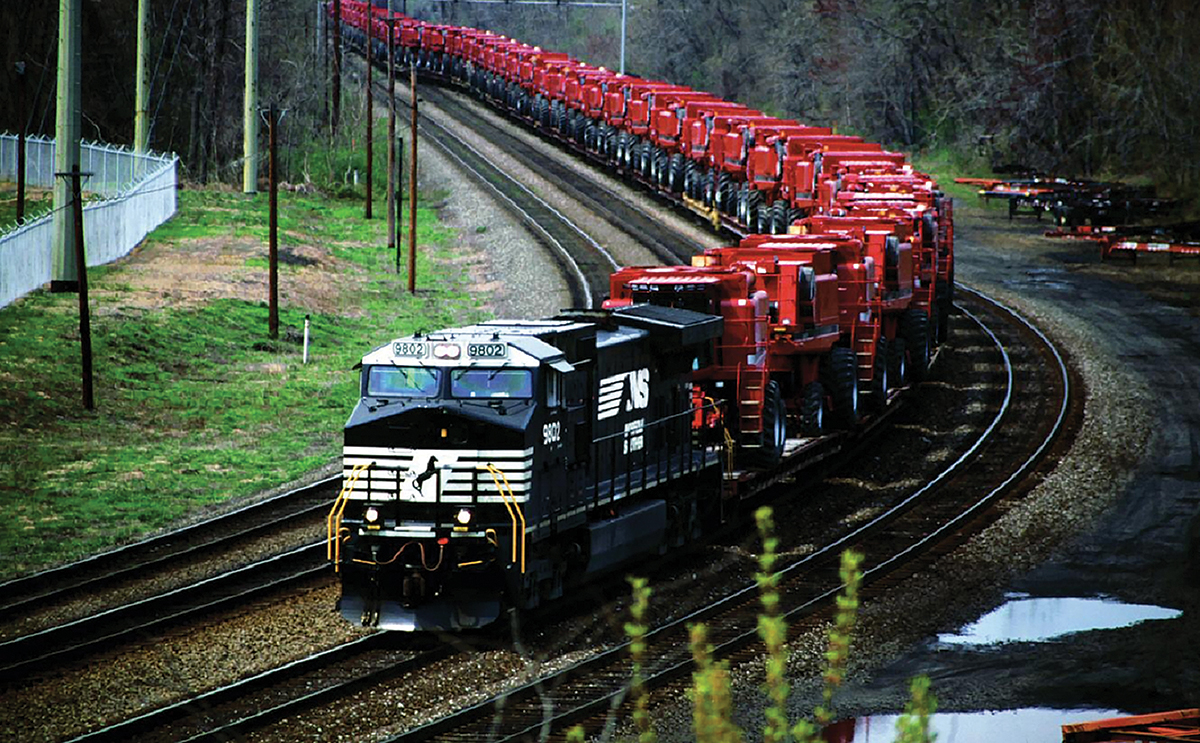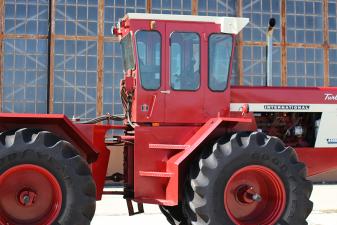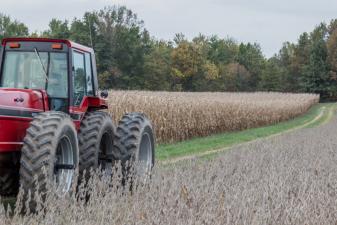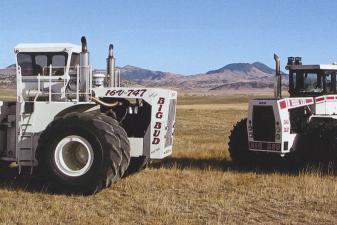IH Red Combines in Central Asia

The following is an excerpt from Red Combines by Lee Klancher et, al. This passage illustrates the salesmanship of bringing IH Combines to Central Asia in the wake of the Soviet Union’s collapse. With abundant natural resources, limited access for imports, and fledgling independent economies, Case IH saw the region as a prime opportunity for international business.
When Partice Loiseleur (Case IH international agriculture projects and corporate farming manager) was tasked with convincing leaders from Turkmenistan that red combines provided more longevity and value than the much cheaper Russian-built equipment being used at that time, he turned to a farm family from Rochelle, Illinois. The family had farmed for three generations on the same piece of ground and used nothing but red equipment. They also maintained their machines and kept them running for decades. The farm was on the route Loiseleur frequently used when taking foreign groups on tours. While en route between manufacturing facilities, Loiseleur would stop with his group at this farm.
The questions he would ask became a familiar routine.
“The joke with the rep and with the farmer was to go into the oldest tractor in the field and ask the farmer, ‘How old is this tractor?’
“‘It is 17 years old.’
“How many hours do you have on the counter?
“‘We must have 10,000 hours.’
“How many times have you opened the engine?
“‘Never, why would I need to rebuild the engine after 10,000 hours? It’s brand new!’”
The representatives from Turkmenistan reacted with shock.
“Obviously, they expected less and could not believe what they heard because for them, an engine couldn’t have lasted for more than 1,500 hours,” Loiseleur said. “That was the kind of method. We have to convince them about our machine reliability, our machine performance compared to what they have been using so far.” The bit proved to be key, as Case IH equipment cost seven times more than the Soviet equipment being used in much of Central Asia.

When dignitaries from Central Asia were brought to America to see red equipment in action, they were amazed that the machines could last for generations. This 1986 Case IH 1660 wears original paint and in 2015 was still hard at work on the farm of owner Jeff Jacobs. Lee Klancher
The area was of great interest to Case IH in the early 1990s. When the Soviet Union collapsed in 1991, the Turkish speaking countries of Central Asia found themselves free for a time. The area is rich in oil, and the harsh climate and poor transportation infrastructure limits imports. The region relies heavily on internal agriculture to feed its people with grain and clothe them with cotton. With the borders open and the existing equipment at the time being Soviet-built machines that lasted less than 1,500 hours and harvested poorly, opportunity existed for an equipment manufacturer to enter the market. Loiseleur headed the sales effort to Turkmenistan, the first country Case IH approached. The task proved tremendously challenging. While the company had ties to Russia dating back to the 1910s, Case IH had no existing network, dealerships, or even sales history with Central Asia.
“There was no dealer, there was no service infrastructure. There was no, nothing in between,” Loiseleur said. “The challenge was not only to provide the machines, but also to provide everything around the machine, meaning that we had to supply service, we had to supply the parts, we had to supply even lubricant.”
They also had to build relationships with the government, and convince it that Case IH could provide all the service necessary. All this was done without any immediate support from the head office in Europe or the United States. Calls to France could take up to day to get an answer. Loiseleur carried a printer, paper, brochures, and everything he needed with him, and had to provide answers on the spot.
“We could only rely on ourselves,” he said.
----------
To learn more about Partice Loiseleur's experience selling red combines abroad (including banquets with presidents, vodka in bulk, and post-meeting trips to the sauna), check out Red Combines 1915-2015.

This Northern Suffolk train is loaded with 1660 combines on their way to Turkmenistan or Uzbekistan via the port of Baltimore. CaseIH








